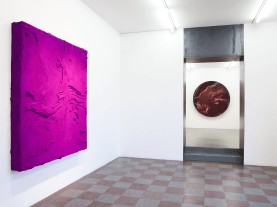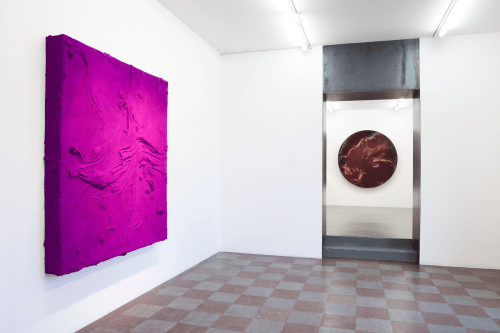

Installation Shot, Jason Martin, Pictures for Pleasure, 2011
Photo Jean-Baptiste Béranger
A monochrome painting is an artwork that consists of only one colour. By using this one colour the artist can study the concept of what a painting is in its very essence. It is a type of abstract art that is often used to explore themes and concepts that goes beyond the painting itself.
The monochrome often serves one of two purposes. The first of these was communicating spiritual purity; by choosing one colour, artists could explore the tranquillity of total abstraction. One of the most well-known artists who worked in this manner is Yves Klein – who even made his own patented colour: Klein Blue. These notions of paring down art and making it more about ideas than aesthetic presentations had a major impact on the Minimalist and Conceptual Art of future generations.
The second purpose of monochrome, for some artists, was to reduce the painting or sculpture to its simplest form so that the focus of the piece would be on its pure physical elements; colour, form, texture or the way in which it was made. Among the first was Kazimir Malevich who about 1917–18 created a series of white on white paintings.
Another great example of an artist who makes monochrome art is Jason Martin. He is known for vigorous monochrome paintings, created by spreading oil or acrylic gel across hard surfaces such as aluminium, steel or perspex in a single movement that is repeated many times. His intense investigation of pigment has produced pulsating sculptural landscapes that blur the distinction between abstraction and figuration. Wetterling Gallery arranged an exhibition of Martin’s magnificent artworks in 2011 named Pictures of Pleasure.